How to Plant and Care for Bulbs and Bulb Type Plants
By careful planning and utilizing a mix of early and late flowering bulbs,
you can create a flower show that will continue for months.
Whether you prefer your bulbs naturalized into the landscape, clustered in groups or standing in a single line,
there are a few things that you should consider and some
site preparation you should do before you begin planting.
|
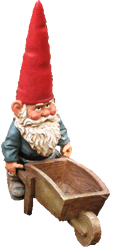
|
Growing Requirements of Bulbs
Most bulbs require full sun, but a few, like the Lily of the Valley will bloom fine in full shade.
See the bulb chart for the growing requirements, planting time, depths and spacing for your bulbs.
The planting depths indicated are to the top of the bulb, NOT the depth of the hole!
For the best results, bulbs need porous, well-drained soil that has been enriched
by adding a generous amount of compost, peat moss or other organic matter.
Regardless of which type of bulb you are planting, the entire planting site should be cultivated
and loosened to a minimum depth of 6 to 8 inches. Deeper is better.
Rake the soil smooth, then arrange the bulbs on the surface in the position where you expect to plant them.
This will give you a chance to re-arrange them as needed.
Depending on your layout, dig your trenchs, holes or small clusters of holes to the appropriate depth.
|
Planting Bulbs
A bulb contains all the nutrients it requires to bloom the first year so if your soil is rich
and ready to go, it is not really necessary to add fertilizer at planting time,
but if the space has been used as a garden before it might be a good idea to add some bonemeal or superphosphate to the soil below the hole to help new root growth.
Dig your trench or hole a few inches deeper and mix the fertilizer into the soil at the bottom.
Replace the original few inches of soil to the hole, over the fertilized soil, to bring it back to the proper depth. This will keep the tender, young roots away from immediate contact with the fertilizer, which would cause them to burn.
|
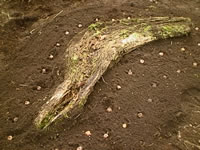 |
Plant your bulbs by placing them into position. Never push or force the bulb into the soil!
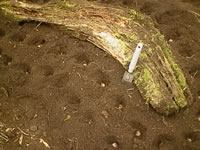 |
Now would be a good time to draw a map, take a photo,
or mark plant tags to help you locate where you planted everything.
Fill the holes and trenches back in, but do not pack the soil over the bulbs.
In subsequent years you should sprinkle a good bulb type food over the soil
surface at the beginning of each growing season.
Water regularly and deeplyly to keep the soil evenly moist throughout
the growing season of your bulbs. Remove spent flowers promptly!
Once all the flowers are gone, you should sprinkle granular bulb food over the flower bed again. |
Always allow the foliage to remain on your bulbs, even if has become untidy.
The foliage is necessary because it will continue to provide food to the bulb for the the next year's flowers.
|
Once the foliage has turned yellow and limp, it can be pulled off easily.
Naturalizing Bulbs in Your Lawn
Many spring flowering bulbs are ideal for naturalizing.
Crocus, Dutch Iris,
Grape Hyacinth, Daffodils and Bluebells can be grown right in the lawn.
Choose an area where the grass can be left unmowed in the spring until the foliage of your bulbs has matured.
Hillsides and the perimeter of wooded areas are also excellent areas for naturalizing bulbs.
Grab a hand full of bulbs and give them a toss.
Wherever they land, that's where you plant them.
Planting is then done by removing a small section of sod and digging with a bulb planter, to the appropriate depth for the bulb. |
|
Loosen the soil in the hole, and then add a mixture of sand and peat moss, along with about a tablespoon of granular bulb fertilizer, mix well, set the bulbs in place at the proper depth and cover the bulbs with soil. Replace the sod plug.
Naturalized bulbs can be left undisturbed for many years.
Bulbs in Bloom
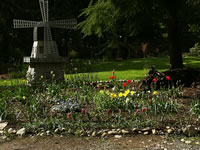 |
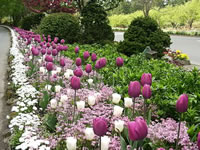 |
|
|
|
Search The Garden Helper:




